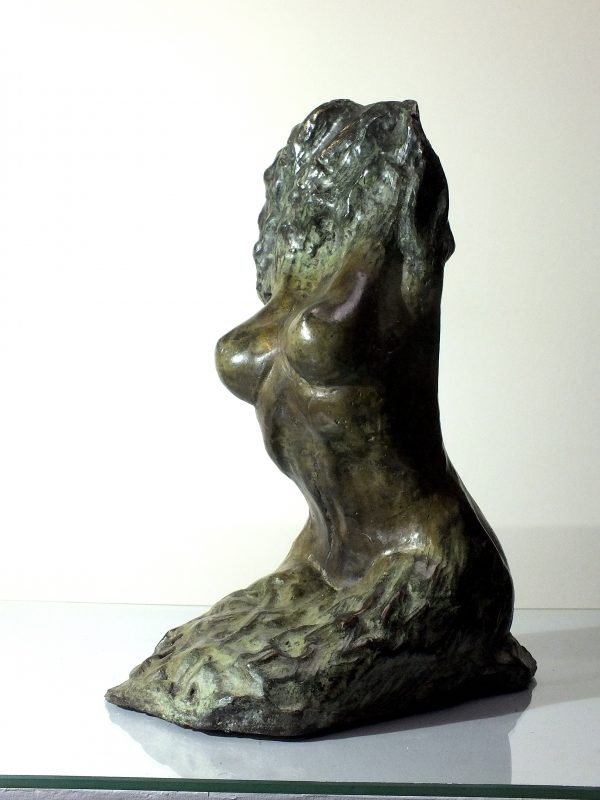Sculptures and the Lost Wax Casting Technique
Since the dawn of time, artisans have come up with techniques to capture the essence of beauty with different materials. One example is lost wax casting, a method used by sculptors to create beautiful bronze sculptures with intricate details. But what is this artistic technique, how is it carried out, and when did it originate?
What is the Lost Wax Casting Technique?
Also known as cire-perdue, the lost wax casting technique is a metal casting method in which a metal, such as bronze, is molten and poured into a mold. The resulting sculpture is a metal duplicate, cast from an original.The mold is prepared using a wax model, so when it’s ready, the wax is melted and drained out of the mold.
The hollow core of the mold is treated with fire-resistant materials to make it resistant to the effects of molten bronze. This develops the mold by introducing a layer of a fire-resistant core that prevents the metal from filling the mold completely.
When Did it Start?
The lost wax casting technique dates back to the 3rd millennium BC. Since then, the method has undergone very few changes. The earliest example of a sculpture cast with this technique is an amulet from the Indus Valley Civilization, dating back approximately 6,000 years ago.
The technique was commonly used throughout Europe until about the 18th century when piece molding began to grow more popular.
The Process
Sculptors can develop a cast using a wax model or a wax copy of a model that’s not made of wax. The former is called the direct method while the latter, indirect. Using the indirect process allows the artist to use a model repetitively without having to destroy it.
Creating a Model
The artist starts by making an original model using clay, wax, or another material. Most mold-makers prefer oil-based clay or wax because of how they retain their softness.
Making a Mould
The next step involves making a mold around the model. Inside the rigid outer mold, you’ll find a soft inner mold made from silicone, polyurethane rubber, or latex. The outer mold, usually made from fiberglass or plaster, helps in supporting the inner mold. While constructing it, mold makers place a shim with different keys between the two parts of a mold. This allows them to put back the mold accurately.
Adding the Wax
After completing the mold, they add melted wax into it and move it around until they have an even layer coating the mold’s inner surface. This step is repeated until they achieve the required thickness.
Removing the Wax
Next up, sculptors, such as Tim Rawlins, need to remove the hollow wax model from the original mold carefully. They can choose to use the same mold again when making a copy of the sculpture. Depending on how durable the mold is, they can make a large number of them.
Chasing
Then, the wax model is chased by rubbing along the flashing with a heated metal tool. To cover up blemishes, the mold is dressed so it looks like the original. Wax pieces that were molded on their own can be heated and fixed together.
Spruing
After that, the wax undergoes spruing. Also made from wax, the sprue will provide a channel for molten bronze to move towards the mold.
Dipping the Wax Copy in Silica Slurry
The sprued wax mold copy is immersed into a silica slurry and then dry crystalline silica. The combination of grit and slurry is the ceramic shell mold. After drying, the wax copy goes through the same process, so the entire structure is coated with a half-inch thick layer. Bigger pieces require thicker shells.
Hardening the Silica
To harden the silica, the piece is put inside a kiln. Once inside, the heat hardens the silica to create a shell while the wax melts and is lost. Now, all that you have left is a shell with empty space formerly occupied by wax.
Testing with Water
After letting the ceramic shell cool off, it’s time to check if water will flow through the vent and feeder tubes properly. Mold-makers can fix leaks or cracks using thick refectory paste.
Pouring Molten Metal
Now, it’s finally time for the pour. But before that, the shell needs to be heated to remove any trace of moisture. This is also to make sure it’s hot for pouring melted bronze because a cold shell will shatter due to the temperature difference. Molten metal is carefully poured into the silica shell and allowed to cool off.
Releasing from the Hardened Shell and Chasing
The shell is removed using a hammer to release the casting, and the sprues are cut off. Finally, the artist works the casting to remove details of the casting process. This allows the sculpture to look like the original model.
https://www.britannica.com/technology/materials-processing
https://en.m.wikipedia.org/wiki/Lost-wax_casting
http://www.visbalsculpture.com/lostwaxprocess.html
https://www.calkengallery.com/art-blog/2019/bronze-sculpture-casting-the…

